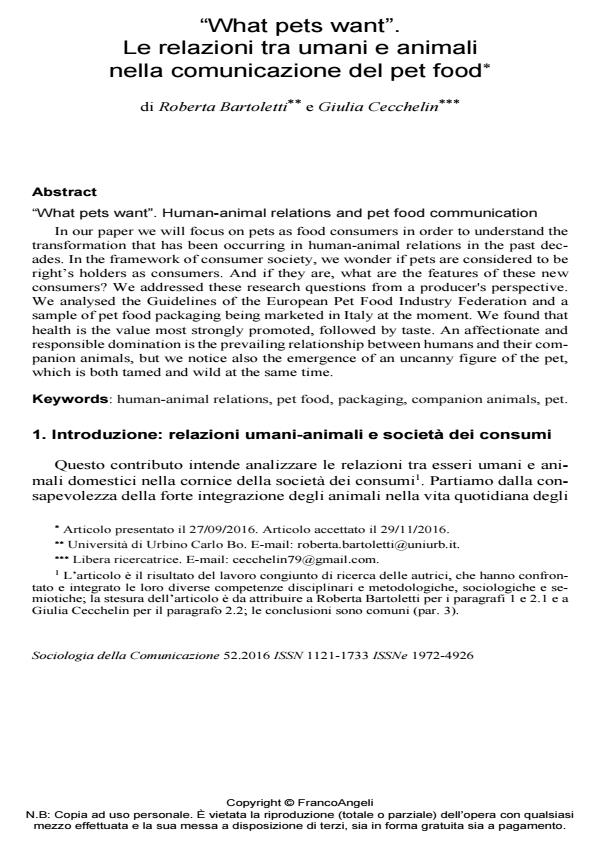"What pets want". Human-animal relations and pet food communication
Journal title SOCIOLOGIA DELLA COMUNICAZIONE
Author/s Roberta Bartoletti, Giulia Cecchelin
Publishing Year 2017 Issue 2016/52
Language Italian Pages 32 P. 28-49 File size 313 KB
DOI 10.3280/SC2016-052004
DOI is like a bar code for intellectual property: to have more infomation
click here
Below, you can see the article first page
If you want to buy this article in PDF format, you can do it, following the instructions to buy download credits

FrancoAngeli is member of Publishers International Linking Association, Inc (PILA), a not-for-profit association which run the CrossRef service enabling links to and from online scholarly content.
In our paper we will focus on pets as food consumers in order to understand the transformation that has been occurring in human-animal relations in the past decades. In the framework of consumer society, we wonder if pets are considered to be right’s holders as consumers. And if they are, what are the features of these new consumers? We addressed these research questions from a producer's perspective. We analysed the Guidelines of the European Pet Food Industry Federation and a sample of pet food packaging being marketed in Italy at the moment. We found that health is the value most strongly promoted, followed by taste. An affectionate and responsible domination is the prevailing relationship between humans and their companion animals, but we notice also the emergence of an uncanny figure of the pet, which is both tamed and wild at the same time.
Keywords: Human-animal relations, pet food, packaging, companion animals, pet
Roberta Bartoletti, Giulia Cecchelin, "What pets want". Le relazioni tra umani e animali nella comunicazione del pet food in "SOCIOLOGIA DELLA COMUNICAZIONE " 52/2016, pp 28-49, DOI: 10.3280/SC2016-052004